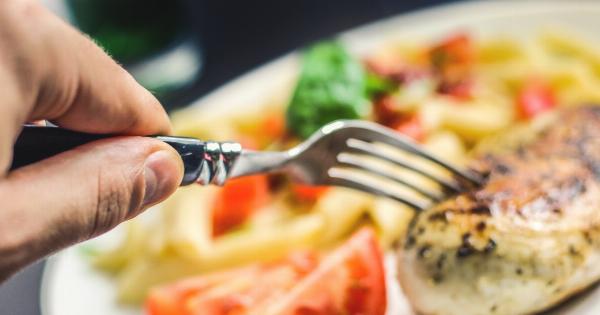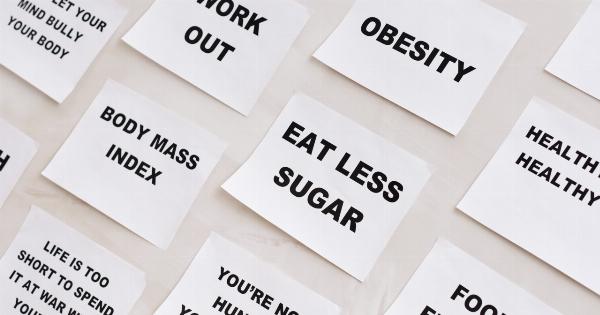In today’s fast-paced and stressful world, many people find solace in food. However, for some individuals, eating becomes more than just a source of comfort or nourishment. It turns into a compulsive habit that takes control over their lives.
Compulsive eating, also known as food addiction or binge eating disorder, can have severe physical and emotional consequences. In this article, we will explore the nature of compulsive eating, its causes, symptoms, and potential treatments.
Understanding Compulsive Eating
Compulsive eating is characterized by an overwhelming urge to consume large quantities of food, even when not physically hungry.
Individuals with this disorder often experience a loss of control during eating episodes and may continue to eat until they are uncomfortably full or even in pain. These episodes are typically accompanied by feelings of guilt, shame, and regret, leading to a vicious cycle of emotional distress and further overeating.
The Causes of Compulsive Eating
Compulsive eating is a complex disorder with multiple underlying causes. It often stems from a combination of genetic, psychological, and environmental factors. Some potential causes and risk factors include:.
1. Genetics
There is evidence to suggest that certain genetic factors may predispose individuals to compulsive eating. Research has shown that individuals with a family history of eating disorders are more likely to develop similar patterns of behavior themselves.
2. Emotional Factors
Many people turn to food as a coping mechanism for dealing with negative emotions such as stress, anxiety, or depression. Compulsive eating can provide temporary comfort and distraction, offering a brief escape from emotional pain or discomfort.
3. Dieting and Restrictive Eating
Ironically, restrictive eating behaviors or excessive dieting can increase the likelihood of developing compulsive eating habits.
When the body is deprived of certain foods or nutrients, it can trigger intense cravings and lead to binge eating episodes.
4. Traumatic Experiences
Individuals who have experienced traumatic events or abuse may be more susceptible to developing compulsive eating disorders. Food can serve as a form of self-soothing or a way to regain control in the aftermath of trauma.
5. Social and Cultural Factors
Our social environment and cultural norms surrounding food can also contribute to compulsive eating.
For example, frequent exposure to advertisements promoting unhealthy snacks or meals can make individuals more susceptible to impulsive eating behaviors.
The Symptoms of Compulsive Eating
Recognizing the signs of compulsive eating is crucial for early intervention and support. Common symptoms of this disorder include:.
1. Frequent and Uncontrolled Binge Eating
Compulsive eaters often engage in frequent episodes of binge eating, consuming unusually large amounts of food in a short period. Binge eating episodes are usually accompanied by a sense of powerlessness and inability to stop.
2. Hiding or Hoarding Food
Many individuals with compulsive eating disorders hide food or have secret stashes of snacks to satisfy their cravings covertly. This behavior is often fueled by a fear of judgment or the desire to maintain control over their eating habits.
3. Emotional Eating
Compulsive eaters rely on food as a primary method of managing their emotions. They may reach for snacks when feeling sad, stressed, bored, or lonely, using food as a way to fill an emotional void.
4. Feelings of Guilt and Regret
After a binge eating episode, individuals with compulsive eating disorders often experience intense feelings of guilt, shame, and self-loathing. These negative emotions can perpetuate the cycle of overeating and further damage self-esteem.
5. Weight Gain and Related Health Issues
Compulsive eating can lead to significant weight gain and subsequent health problems such as obesity, diabetes, high blood pressure, and heart disease.
These physical consequences further compound the psychological distress associated with the disorder.
Seeking Help and Treatment Options
Breaking free from compulsive eating habits requires professional intervention and support. Treatment options for compulsive eating typically involve a multidisciplinary approach, addressing both the physical and psychological aspects of the disorder.
1. Therapy and Counseling
Psychotherapy, particularly cognitive-behavioral therapy (CBT), has proven to be effective in treating compulsive eating.
Therapists work with individuals to address underlying emotional issues, develop healthy coping strategies, and challenge negative thoughts and behaviors related to food.
2. Support Groups
Joining support groups or attending self-help meetings, such as Overeaters Anonymous, can provide a sense of community and understanding. Connecting with others who have similar struggles can be immensely beneficial in overcoming compulsive eating.
3. Nutritional Counseling
Working with a registered dietitian or nutritionist can help individuals develop a balanced and sustainable eating plan. Learning to nourish the body with wholesome foods and understand hunger cues can reduce the likelihood of binge episodes.
4. Medication
In some cases, medication may be prescribed to individuals with compulsive eating disorders. Antidepressants or appetite suppressants, under the supervision of a healthcare professional, may help regulate mood and decrease food cravings.
Conclusion
Compulsive eating is a serious condition that can severely impact an individual’s physical and emotional well-being. Recognizing the signs and seeking appropriate treatment is crucial for overcoming this disorder.
By addressing the underlying causes and developing healthy coping mechanisms, individuals can regain control of their eating habits and live a fulfilling life free from the shackles of compulsive eating.






























